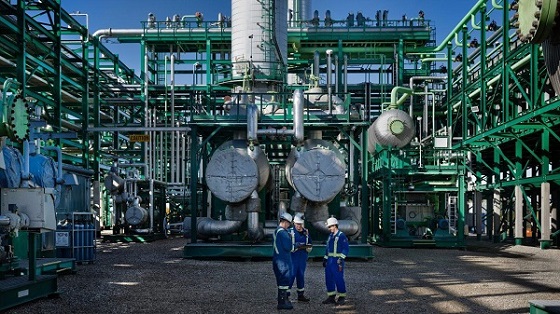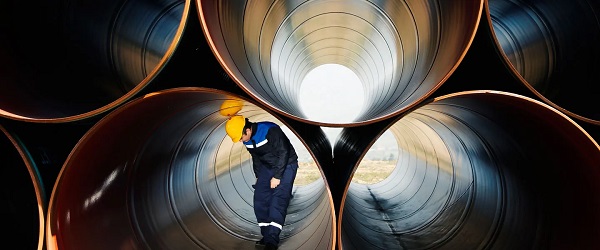Alberta
Calgary geothermal tech leader Eavor awarded $130 million CND grant from EU to help European energy security

News Release from Eavor Technologies Inc.
Eavor’s next-generation geothermal project awarded €91,6 million grant from the European Innovation Fund
Eavor Technologies Inc. and Eavor Erdwärme Geretsried GmbH (together “Eavor”), the leader in globally scalable geothermal closed-loop technology, has been awarded a €91,6 million grant from the European Innovation Fund (“EIF”), in support of the Eavor-Europe™ geothermal project already under construction in Bavaria south of Munich near the town of Geretsried, Germany.
The project is the world’s first commercial implementation of an Eavor-Loop™, a showpiece of the zero-emissions heat and power production capabilities of next-generation geothermal technology, and a flagship site for the fundamental ability of Eavor-Loop™ to provide energy security and autonomy, globally.
Construction began in October 2022, with drilling scheduled to commence in July 2023. Two of Europe’s largest drilling rigs are already under a four-year contract with KCA-Deutag. An Organic Rankine Cycle (“ORC”) power plant is being designed and constructed simultaneously with drilling operations in collaboration with Turboden S.p.A., with the first energy production scheduled for Q4, 2024.
John Redfern, President, CEO and Co-Founder at Eavor Technologies Inc., stated: “I’d like to thank the European Commission. We at Eavor are humbled to be included in the EIF program alongside so many prestigious European multinationals. We believe this first commercial Eavor-Loop™ will open the floodgates to the broad implementation of what is the first truly scalable form of green baseload energy. In this way, we hope to help Europe solve its twin existential threats of Climate Change and lack of Energy Autonomy”.
The project will result in 8,2 MWe and ~44.000 tCO2e GHG emissions avoided per year including anticipated heat offtake and power sales. Eavor estimates that ~20.000 homes will be powered with clean energy harnessed from the Earth and up to 600 person-years of drilling services and powerplant/infrastructure jobs will be created during the construction phase of the project.
Philippe Dumas, Secretary General at the European Geothermal Energy Council, stated: “I’m glad to see the EC Innovation Fund supporting the geothermal project submitted by Eavor GmbH to commercially demonstrate innovative renewable district heating and power supply in Geretsried, Germany. Given the energy, climate and food security crisis as well as the need to meet the tripling of the geothermal target by 2030, this innovative project is of paramount importance: it will increase the security of electricity supply, help decarbonise the district heating sector, reduce greenhouse gas emissions and stimulate technological innovation all of which could also be replicated elsewhere.”
Daniel Mölk, President at Eavor GmbH, stated: “Eavor would like to thank regional stakeholders, the Bavarian/German Governments, the community, and operational partners generally. Eavor, and its project partners, Chubu Electric Power Co., Inc. and Enex Power Germany GmbH, are honoured to be so welcomed and supported by all.”
Project Summary
The Eavor-Loop™ at Geretsried, Germany will provide clean baseload energy for district heating and/or power generation. It consists of multiple large underground radiators buried at 4,500 metres. Operating under a natural thermosiphon requiring no pump and no aquifer, clean fresh water will circulate through the radiator carrying the heat to surface.
With practically no greenhouse gas (GHG) emissions during operation, Eavor Loop will avoid almost 100% of the emissions compared to the reference scenario. Eavor Loop is also an environmentally friendly solution: it can be installed virtually anywhere providing the EU with a scalable, secure source of renewable heat and power. An on-site visitor centre will be built and open to the public interested to know more about the technology and the operations of this first-of-kind implementation. – Eavor-Europe™ Webpage
About the European Innovation Fund (EUIF):
With projected revenue of more than €38 billion by 2030 from the EU Emissions Trading System (ETS), the Innovation Fund aims to create the right financial incentives for companies and public authorities to invest in the next generation of low-carbon technologies and give EU companies a first-mover advantage to become global technology leaders. The EUIF focuses on highly innovative technologies and big flagship projects within Europe. The European Commission is tasked with overall management and implementation of the fund and has designed the European Climate, Infrastructure and Environment Executive Agency (CINEA) as the implementing body of the fund.
The first call for large-scale projects awarded grants of €1.1 billion to 7 projects in energy-intensive industries, hydrogen, carbon capture, use and storage, and renewable energy.
The projects selected under the €1.8 billion second call for large-scale projects were evaluated by independent experts based on their ability to reduce greenhouse gas emissions compared to traditional technologies and to innovate beyond the state-of-the-art, while being sufficiently mature for deployment. Other selection criteria included the projects’ potential for scalability and cost effectiveness. – Innovation Fund
Reference material: Innovation Fund projects (europa.eu)
About Eavor Technologies Inc.
Eavor (pronounced “Ever”) is a technology-based energy company led by a team dedicated to creating a clean, reliable, and affordable energy future on a global scale. Eavor’s solution (Eavor-Loop™) represents the world’s first truly scalable form of clean, dispatchable, and flexible power. Eavor achieves this by mitigating or eliminating many of the issues that have traditionally hindered geothermal energy. Eavor instead circulates a benign working fluid that is completely isolated from the environment in a closed-loop, through a massive subsurface radiator. This radiator simply collects heat from the natural geothermal gradient of the Earth via conduction. [email protected] | Eavor.com
About KCA Deutag:
With over 130 years of experience, KCA Deutag is a leading drilling, engineering and technology company working onshore and offshore with a focus on safety, quality and operational performance. We operate approximately 81 drilling rigs in 14 countries, either directly or through our affiliates, employing people in Africa, Europe, the Middle East, the Caspian Sea and Canada. KCA Deutag consists of our business units: Land, Offshore and Kenera. Land and Offshore are our operational divisions delivering safe, effective, trouble-free operations across 20 countries. Kenera brings together our design and engineering specialists RDS and land rig and oilfield manufacturer Bentec under one business unit. Kenera was established to expand our offering in both hydrocarbons and energy transition markets, with three dedicated segments covering innovative services, technology and engineering, and manufacturing. For further information on KCA Deutag please visit kcadeutag.com
About Turboden:
Turboden S.p.A., Mitsubishi Heavy Industries froup company, is an Italian firm and a global leader in the design, manufacture, and maintenance of Organic Rankine Cycle (ORC) systems, highly suitable for distributed generation, that generate electric and thermal power exploiting multiple sources, such as renewables (biomass and geothermal energy), traditional fuels, and waste heat from industrial processes, waste incinerators, engines, or gas turbines. Today Turboden expands its technological solutions with gas expanders and large heat pumps to play a broader role in the decarbonisation of the district heating sector and of energy-intensive industrial processes. turboden.com
Alberta
Cross-Canada NGL corridor will stretch from B.C. to Ontario

Keyera Corp.’s natural gas liquids facilities in Fort Saskatchewan. Photo courtesy Keyera Corp.
From the Canadian Energy Centre
By Will Gibson
Keyera ‘Canadianizes’ natural gas liquids with $5.15 billion acquisition
Sarnia, Ont., which sits on the southern tip of Lake Huron and peers across the St. Clair River to Michigan, is a crucial energy hub for much of the eastern half of Canada and parts of the United States.
With more than 60 industrial facilities including refineries and chemical plants that produce everything from petroleum, resins, synthetic rubber, plastics, lubricants, paint, cosmetics and food additives in the southwestern Ontario city, Mayor Mike Bradley admits the ongoing dialogue about tariffs with Canada’s southern neighbour hits close to home.
So Bradley welcomed the announcement that Calgary-based Keyera Corp. will acquire the majority of Plains American Pipelines LLP’s Canadian natural gas liquids (NGL) business, creating a cross-Canada NGL corridor that includes a storage hub in Sarnia.
“As a border city, we’ve been on the frontline of the tariff wars, so we support anything that helps enhance Canadian sovereignty and jobs,” says the long-time mayor, who was first elected in 1988.
The assets in Sarnia are a key piece of the $5.15 billion transaction, which will connect natural gas liquids from the growing Montney and Duvernay plays in B.C. and Alberta to markets in central Canada and the eastern U.S. seaboard.
NGLs are hydrocarbons found within natural gas streams including ethane, propane and pentanes. They are important energy sources and used to produce a wide range of everyday items, from plastics and clothing to fuels.
Keyera CEO Dean Setoguchi cast the proposed acquisition as an act of repatriation.
“This transaction brings key NGL infrastructure under Canadian ownership, enhancing domestic energy capabilities and reinforcing Canada’s economic resilience by keeping value and decision-making closer to home,” Setoguchi told analysts in a June 17 call.
“Plains’ portfolio forms a fully integrated cross Canada NGL system connecting Western Canada supply to key demand centres across the Prairie provinces, Ontario and eastern U.S.,” he said.
“The system includes strategic hubs like Empress, Fort Saskatchewan and Sarnia – which provide a reliable source of Canadian NGL supply to extensive fractionation, storage, pipeline and logistics infrastructure.”
Martin King, RBN Energy’s managing director of North America Energy Market Analysis, sees Keyera’s ability to “Canadianize” its NGL infrastructure as improving the company’s growth prospects.
“It allows them to tap into the Duvernay and Montney, which are the fastest growing NGL plays in North America and gives them some key assets throughout the country,” said the Calgary-based analyst.
“The crown assets are probably the straddle plants in Empress, which help strip out the butane, ethane and other liquids for condensate. It also positions them well to serve the eastern half of the country.”
And that’s something welcomed in Sarnia.
“Having a Canadian source for natural gas would be our preference so we see Keyera’s acquisition as strengthening our region as an energy hub,” Bradley said.
“We are optimistic this will be good for our region in the long run.”
The acquisition is expected to close in the first quarter of 2026, pending regulatory approvals.
Meanwhile, the governments of Ontario and Alberta are joining forces to strengthen the economies of both regions, and the country, by advancing major infrastructure projects including pipelines, ports and rail.
A joint feasibility study is expected this year on how to move major private sector-led investments forward.
Alberta
Alberta school boards required to meet new standards for school library materials with regard to sexual content

Alberta’s government has introduced new standards to ensure school library materials are age-appropriate.
School libraries should be safe and supportive places where students can learn and explore without being exposed to inappropriate sexual content. However, in the absence of a consistent standard for selecting age-appropriate library materials, school boards have taken different approaches, leading to concerns about safeguards in place.
In response to these concerns, and informed by feedback from education partners and the public, Alberta’s government has created standards to provide school boards with clear direction on the selection, availability and access to school library materials, such as books.
“Our actions to ensure that materials in school libraries don’t expose children to sexual content were never about banning books. These new standards are to ensure that school boards have clear guidance to ensure age-appropriate access to school library materials, while reflecting the values and priorities of Albertans.”
The new standards set clear expectations for school library materials with regard to sexual content and require school boards to implement policies to support these standards.
Standards for school library materials
Under the new standards, school libraries are not permitted to include library materials containing explicit sexual content. Non-explicit sexual content may be accessible to students in Grade 10 and above, provided it is age-appropriate.
“Protecting kids from explicit content is common sense. LGBTQ youth, like all children, deserve to see themselves in stories that are age-appropriate, supportive and affirming – not in material that sexualizes or confuses them.”
School boards must also regularly review their school library collections, publish a full list of available materials and ensure that a staff member supervises students’ access to school library materials. School boards will have to remove any materials with explicit sexual content from their school libraries by October 1.
School board policies and procedures
All school boards must have publicly available policies that align with the new standards for selecting and managing library materials by January 1, 2026. School boards can either create new policies or update existing ones to meet these requirements.
These policies must outline how school library materials are selected and reviewed, how staff supervise students’ access throughout the school day, and how a student, parent, school board employee or other member of the school community can request a review or removal of materials in the school library. School boards are also required to clearly communicate these policies to employees, students and parents before January 2026.
“A robust, grade- and age-appropriate library catalogue is vital for student success. We welcome the ministry’s initiative to establish consistent standards and appreciate the ongoing consultation to help craft a plan that will serve our families and communities well.”
“Red Deer Public Schools welcomes the new provincial standards for school library materials. Our division is committed to maintaining welcoming, respectful learning spaces where students can grow and thrive. Under the new standards for school libraries, we remain dedicated to providing learning resources that reflect our values and support student success.”
Quick facts
- The new standards will apply to public, separate, francophone, charter and independent schools.
- The ministerial order does not apply to municipal libraries located within schools or materials selected for use by teachers as learning and teaching resources.
- From May 26 to June 6, almost 80,000 people completed an online survey to provide feedback on the creation of consistent standards to ensure the age-appropriateness of materials available to students in school libraries.
Related information
- Ministerial Order
- School library standards engagement
- Reference Materials: Content warning: this document contains graphic content that may be disturbing to viewers and is not appropriate for young viewers. Viewer discretion is advised.
-

 Business18 hours ago
Business18 hours agoMost Canadians say retaliatory tariffs on American goods contribute to raising the price of essential goods at home
-

 National1 day ago
National1 day agoWomen and girls beauty pageant urges dismissal of transgender human rights complaint
-

 Alberta18 hours ago
Alberta18 hours agoCross-Canada NGL corridor will stretch from B.C. to Ontario
-

 International2 days ago
International2 days agoSupport for the Ukraine war continues because no one elected is actually in charge.
-

 Business2 days ago
Business2 days agoTrump slaps Brazil with tariffs over social media censorship
-

 Business2 days ago
Business2 days agoCBC six-figure salaries soar
-

 Business19 hours ago
Business19 hours agoB.C. premier wants a private pipeline—here’s how you make that happen
-

 Addictions2 days ago
Addictions2 days agoCan addiction be predicted—and prevented?




